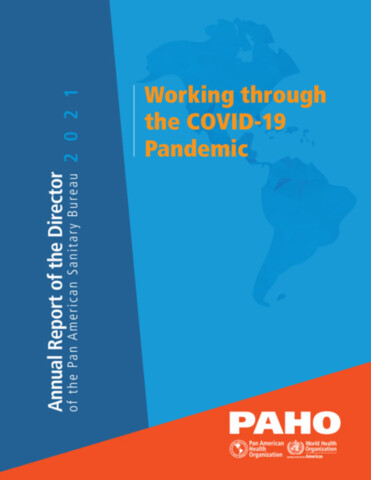Report on PAHO’s ‘Best Buys’ Initiative for Disease Elimination in the Americas
Introduction
On October 1, 2025, the Pan American Health Organization (PAHO) introduced a new technical tool, “Best Buys for Disease Elimination,” during its 62nd Directing Council. This initiative provides an evidence-based framework to accelerate the elimination of over 30 communicable diseases and related conditions within the Region of the Americas. The program is designed to guide countries in the efficient allocation of resources and to prioritize interventions for populations in vulnerable situations, directly contributing to the 2030 Agenda for Sustainable Development.
The targeted conditions include:
- Vaccine-preventable diseases
- Neglected tropical and zoonotic diseases
- Sexually transmitted infections
- Vector-borne diseases
- Tuberculosis and cervical cancer
Alignment with Sustainable Development Goals (SDGs)
The “Best Buys” initiative is fundamentally aligned with several key Sustainable Development Goals, providing a strategic pathway for member states to achieve their 2030 targets.
- SDG 3: Good Health and Well-being: The initiative directly addresses Target 3.3, which calls for an end to the epidemics of AIDS, tuberculosis, malaria, and neglected tropical diseases, and to combat other communicable diseases by 2030.
- SDG 10: Reduced Inequalities: By explicitly focusing on bringing integrated services to marginalized communities, incarcerated populations, and those in informal settlements, the initiative works towards Target 10.2, promoting the inclusion of all, and Target 10.3, ensuring equal opportunity and outcomes.
- SDG 17: Partnerships for the Goals: The tool is designed to foster collaboration among decision-makers, health workers, cooperation agencies, and donors, strengthening global partnerships for sustainable development as outlined in SDG 17.
Key Features of the ‘Best Buys’ Framework
The “Best Buys” are presented as concise, one-page documents that offer clear and accessible information for strategic planning and implementation. This structure is intended to enhance coordination and the efficient allocation of resources. According to PAHO Director Dr. Jarbas Barbosa, achieving elimination requires a multi-pronged approach focused on strengthening health systems and ensuring equity.
Each “Best Buy” document outlines:
- Expected impact goals and disease elimination targets.
- Key operational indicators for monitoring progress.
- Priority interventions proven to be cost-effective.
Core strategies emphasized for successful implementation include:
- Increasing and sustaining high vaccination coverage.
- Engaging communities to expand access to diagnosis and treatment.
- Strengthening disease surveillance systems.
- Delivering integrated health services to marginalized populations.
Case Study: Malaria Elimination and SDG 3.3
The framework’s application is exemplified by the strategy for malaria. The elimination target is defined as zero new indigenous cases for three consecutive years, a critical milestone for SDG 3.3. To achieve this, the “Best Buys” for malaria detail specific operational indicators and interventions.
Operational Indicators for Malaria
- Maintain test positivity rates below 5%.
- Ensure over 70% of cases are diagnosed and treated within 72 hours of symptom onset.
- Guarantee over 80% of cases are investigated and classified in relevant areas.
Priority Interventions for Malaria
- Expand access to rapid diagnostic tests and timely treatment.
- Engage communities in early case detection.
- Consolidate malaria-free territories through microplanning.
- Distribute insecticide-treated nets at no cost.
- Strengthen surveillance to respond to imported cases.
The success of this approach was highlighted by the recognition of Suriname as the first Amazonian country to eliminate malaria transmission. Experiences shared by delegates from Guyana, Paraguay, and Suriname demonstrated how integrated care and intersectoral partnerships are instrumental in achieving these public health victories and advancing the SDGs.
Conclusion and Strategic Outlook
The “Best Buys for Disease Elimination” tool is a central component of PAHO’s broader Disease Elimination Initiative, which aims to eliminate over 30 communicable diseases in the Americas by 2030. This timeline is in direct alignment with the 2030 Agenda for Sustainable Development. By providing a practical, evidence-based guide, PAHO is empowering countries to build upon a regional legacy of disease elimination and make significant, measurable progress towards achieving SDG 3, SDG 10, and SDG 17, ensuring a healthier and more equitable future for all.
Sustainable Development Goals (SDGs) Addressed
SDG 3: Good Health and Well-being
- The article directly addresses this goal by focusing on PAHO’s “Disease Elimination Initiative,” which aims to eliminate over 30 communicable diseases in the Americas by 2030. The entire text is centered on public health strategies, tools (“Best Buys”), and actions to combat diseases such as malaria, tuberculosis, HIV, and vaccine-preventable illnesses, thereby improving the health and well-being of the population.
SDG 10: Reduced Inequalities
- This goal is connected through the initiative’s explicit focus on equity. The article states that the guide highlights “prioritizing populations in vulnerable situations” and mentions the need to bring “integrated services to marginalized communities, incarcerated populations, and those living in informal settlements.” This demonstrates a clear effort to reduce health inequalities by ensuring that the most vulnerable groups have access to essential health services.
SDG 17: Partnerships for the Goals
- The article highlights the importance of collaboration, which is the essence of SDG 17. It describes the “Best Buys” tool as a resource for a wide range of stakeholders, including “decision-makers, program managers, technical teams, health workers, cooperation agencies, partners, and donors.” Furthermore, it mentions that countries like Guyana, Paraguay, and Suriname shared experiences on implementing “intersectoral partnerships,” underscoring the multi-stakeholder approach required to achieve disease elimination.
Specific SDG Targets Identified
Target 3.3: End the epidemics of AIDS, tuberculosis, malaria and neglected tropical diseases and combat other communicable diseases
- This target is the central focus of the article. PAHO’s initiative is explicitly designed to “accelerate the elimination of more than 30 communicable diseases,” including “neglected tropical and zoonotic diseases, sexually transmitted infections [like HIV],… and others like cervical cancer and tuberculosis.” The specific example of eliminating malaria in Suriname directly aligns with the goal of ending these epidemics by the 2030 deadline mentioned in the article.
Target 3.8: Achieve universal health coverage, including access to quality essential health-care services and access to safe, effective, quality and affordable essential medicines and vaccines for all
- The strategies outlined in the article are key components of achieving universal health coverage. The text calls for actions such as sustaining “high vaccination coverage,” expanding “access to diagnosis and treatment,” and distributing “insecticide-treated nets at no cost.” These measures aim to ensure that all people, especially those in vulnerable situations, receive the essential health services they need without financial hardship.
Target 10.2: Empower and promote the social inclusion of all, irrespective of economic or other status
- While this target is broad, its principles are reflected in the article’s health context. By specifically targeting “marginalized communities, incarcerated populations, and those living in informal settlements,” the initiative promotes health inclusion. Ensuring these groups have access to diagnosis, treatment, and preventative care is a practical step towards reducing the inequalities that exclude them from the benefits of public health advancements.
Indicators for Measuring Progress
Explicit Indicators
- The article provides several explicit operational indicators for malaria, which can be used to measure progress towards its elimination target. These are:
- Zero new indigenous cases of transmission for three consecutive years: This is presented as the ultimate elimination target for malaria.
- Test positivity rates below 5%: A key metric to monitor the level of transmission in a population.
- More than 70% of cases diagnosed and treated within the first 72 hours of symptom onset: An indicator of the health system’s efficiency in responding to cases.
- Over 80% of cases are investigated and classified: An indicator for the strength of the disease surveillance system.
Implied Indicators
- The article implies other indicators through its discussion of necessary actions. These include:
- Vaccination coverage rates: The call to “increase and sustain high vaccination coverage” implies that the percentage of the population vaccinated against specific diseases is a key performance indicator.
- Access to diagnostics and treatment: The strategy to “expand access to diagnosis and treatment” suggests that indicators measuring the proportion of the population (especially vulnerable groups) with access to these services would be used.
- Distribution of preventative materials: The mention of distributing “insecticide-treated nets at no cost” implies tracking the number and coverage of nets distributed to at-risk populations.
Summary of SDGs, Targets, and Indicators
| SDGs | Targets | Indicators |
|---|---|---|
| SDG 3: Good Health and Well-being | Target 3.3: End epidemics of communicable diseases. |
|
| SDG 3: Good Health and Well-being | Target 3.8: Achieve universal health coverage. |
|
| SDG 10: Reduced Inequalities | Target 10.2: Promote social inclusion of all. |
|
| SDG 17: Partnerships for the Goals | Target 17.16: Enhance the Global Partnership for Sustainable Development. |
|
Source: paho.org







